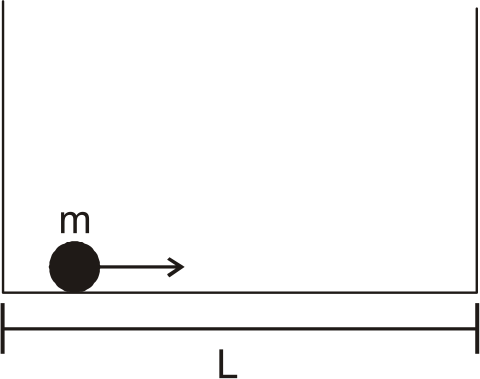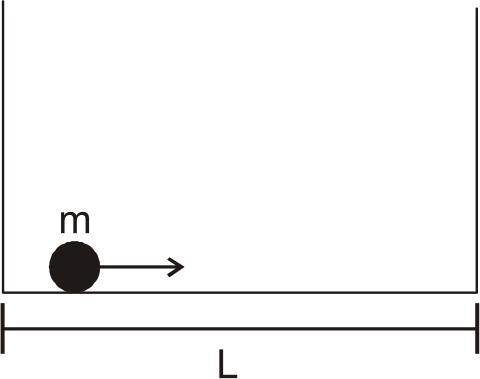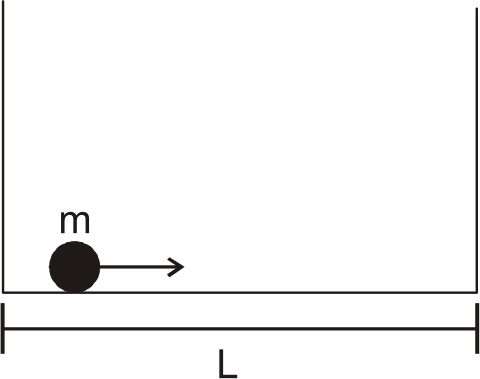A local post office is to send M telegrams which are distributed at random over N communication channels, Each telegram is sent over any channel with equal probability. Chance that not more than one telegram will be sent over each channel is:
The correct Answer is:B
Since lines are more than telegrams, are those lines where telegrams will be sent.
So, number of favourable cases =
Total number of cases =
[As first telegram can go in any one of n lines]
So, required probability =
Topper's Solved these Questions
- BOOK - CENGAGECHAPTER - PROBABILITY I EXERCISE - Exercise (Multiple)8videos
PROBABILITY I
- BOOK - CENGAGECHAPTER - PROBABILITY I EXERCISE - Exercise (Comprehension)14videos
PROBABILITY I
- BOOK - CENGAGECHAPTER - PROBABILITY I EXERCISE - Exercise 9.37videos
PROBABILITY I
- BOOK - CENGAGECHAPTER - PROBABILITY AND STATISTICSEXERCISE - Question Bank37videos
PROBABILITY AND STATISTICS
- BOOK - CENGAGECHAPTER - PROBABILITY IIEXERCISE - NUMARICAL VALUE TYPE2videos
PROBABILITY II
Similar Questions
1. An examination consists of 8 questions in each of which one of the 5 alternatives is the correctde cItat a candidate who has done no preparatory work chooses for each question any one of theusfive alternatives with equal probability, the probability that he gets more than one correct answer is equal to(A) (0.8)8(B) 3 (0.8)8(C) 1-(0.8)(D) 1 3 0.8)8lo BC FYCry meyement of the ant consists of moving to one
View SolutionThe basic idea of Quantum Mechanics is that motion in any system is quantized. The system obeys Classical Mechanics except that not every motion is allowed, only those motions which obey the Bohr-Sommerfeid Quantization.
∮→P.d→r=nh,n∈N.
where →P is the momentum, →r is the position , →r is the position vector and the integral is carried over a closed path. Assuming this is applicable to a particle of mass m moving with a constant speed in a box of lenth L having eleastic collisions with the walls of the box. Answer the following questions. (h=6.6×10−34J−sec.L=3.3A,m=10−30kg)

The difference between ist and IInd energy levels is:View Solution
Knowledge Check
- Question 1 - Select One
is the set up used in the transimiision of information from one place to another. The present day communication systems are electrical, electronic or optical in nature. Three parts of a communication system are:
Transmitter: Communication Channer and Receiver.
A signal is defined as a single valued function of time. This function has a unique value at every instant of time. Most of the speech or information signals cannot be transmitted directly over long distances. They have to be modulated suitably and then trasmitted. Communication channer carries the modulated wave from transmitter to receiver. The air, transmission lines and free space are the common communication channels. the reciever consisits of a pickup antenna, a with the help of the above passage, choose the most appropriate alternative to each of the following questions:
Communication systems may beAelectricalBelectronicCopticalDany of the above - Question 2 - Select One
is the set up used in the transimiision of information from one place to another. The present day communication systems are electrical, electronic or optical in nature. Three parts of a communication system are:
Transmitter: Communication Channer and Receiver.
A signal is defined as a single valued function of time. This function has a unique value at every instant of time. Most of the speech or information signals cannot be transmitted directly over long distances. They have to be modulated suitably and then trasmitted. Communication channer carries the modulated wave from transmitter to receiver. The air, transmission lines and free space are the common communication channels. the reciever consisits of a pickup antenna, a with the help of the above passage, choose the most appropriate alternative to each of the following questions:
A signal is a piece of information, which at a particular time hasAsingle valueBmaximum valueCminimum valueDtwo values. - Question 3 - Select One
Data Transmission is the set up used in the transmision of information from one place to another. The present day communication systems are electrical, electronic or optical in nature. Three parts of a communication system are:
Transmitter: Communication Channer and Receiver.
A signal is defined as a single valued function of time. This function has a unique value at every instant of time. Most of the speech or information signals cannot be transmitted directly over long distances. They have to be modulated suitably and then trasmitted. Communication channer carries the modulated wave from transmitter to receiver. The air, transmission lines and free space are the common communication channels. the reciever consisits of a pickup antenna, a with the help of the above passage, choose the most appropriate alternative to each of the following questions:
Out of a pick up antenna, a demodulater, an amplifier and a transducer, the receiver must haveAany oneBany twoCany threeDall the four.
Nine numbers 1,2,3,.....9 are arranged in a rectangular array of matrix of order 3, So that each number occurs exactly once. Then probability that the sum of the numbers in atleast one horizontal row is greater than 21, is m:n, then (m+n) is
View SolutionConsider a nonconductiing disc of radius r and mass m which has a charge q distributed uniformly over it. The disk is rotated about its axis with an angluar speed ω.Magnetic moment of the disc is 1Nqωr2.then find value of N.
View SolutionThere are five villages, viz. A, B, C, D and E. Two of these have post offices, three have schools and three are accessible by road. Two have populations of more than 5000 cach, two have population between 2000 and 5000 each, and one has a population of less than 2000. Two of these villages have electricity is addition to certain other facilities such as school and accessibility by road. One village with a population of less than 2000 also has a school but neither has a post office nor is accessible by road while each of the villages with a population of more than 5000 has a school, of the two villages having population between 2000 and 5000, only one has a post office and is accessible by road. A is accessible by road. B has a population of more than 5000 D has a school and is accessible by road but does not have a post office, while E has a school but is not accessible by road,C does not have apost office.
Which village does not have any of the facilities available to other villages ?View SolutionThe basic idea of Quantum Mechanics is that motion in any system is quantized. The system obeys Classical Mechanics except that not every motion is allowed, only those motions which obey the Bohr-Sommerfeid Quantization.
∮→P.d→r=nh,n∈N.
where →P is the momentum, →r is the position , →r is the position vector and the integral is carried over a closed path. Assuming this is applicable to a particle of mass m moving with a constant speed in a box of lenth L having eleastic collisions with the walls of the box. Answer the following questions. (h=6.6×10−34J−sec.L=3.3A,m=10−30kg)

The allowed kinetic energy of the particle is :View SolutionThe basic idea of Quantum Mechanics is that motion in any system is quantized. The system obeys Classical Mechanics except that not every motion is allowed, only those motions which obey the Bohr-Sommerfeid Quantization.
∮→P.d→r=nh,n∈N.
where →P is the momentum, →r is the position , →r is the position vector and the integral is carried over a closed path. Assuming this is applicable to a particle of mass m moving with a constant speed in a box of lenth L having eleastic collisions with the walls of the box. Answer the following questions. (h=6.6×10−34J−sec.L=3.3A,m=10−30kg)

The allowed momenta are given by:View Solution
